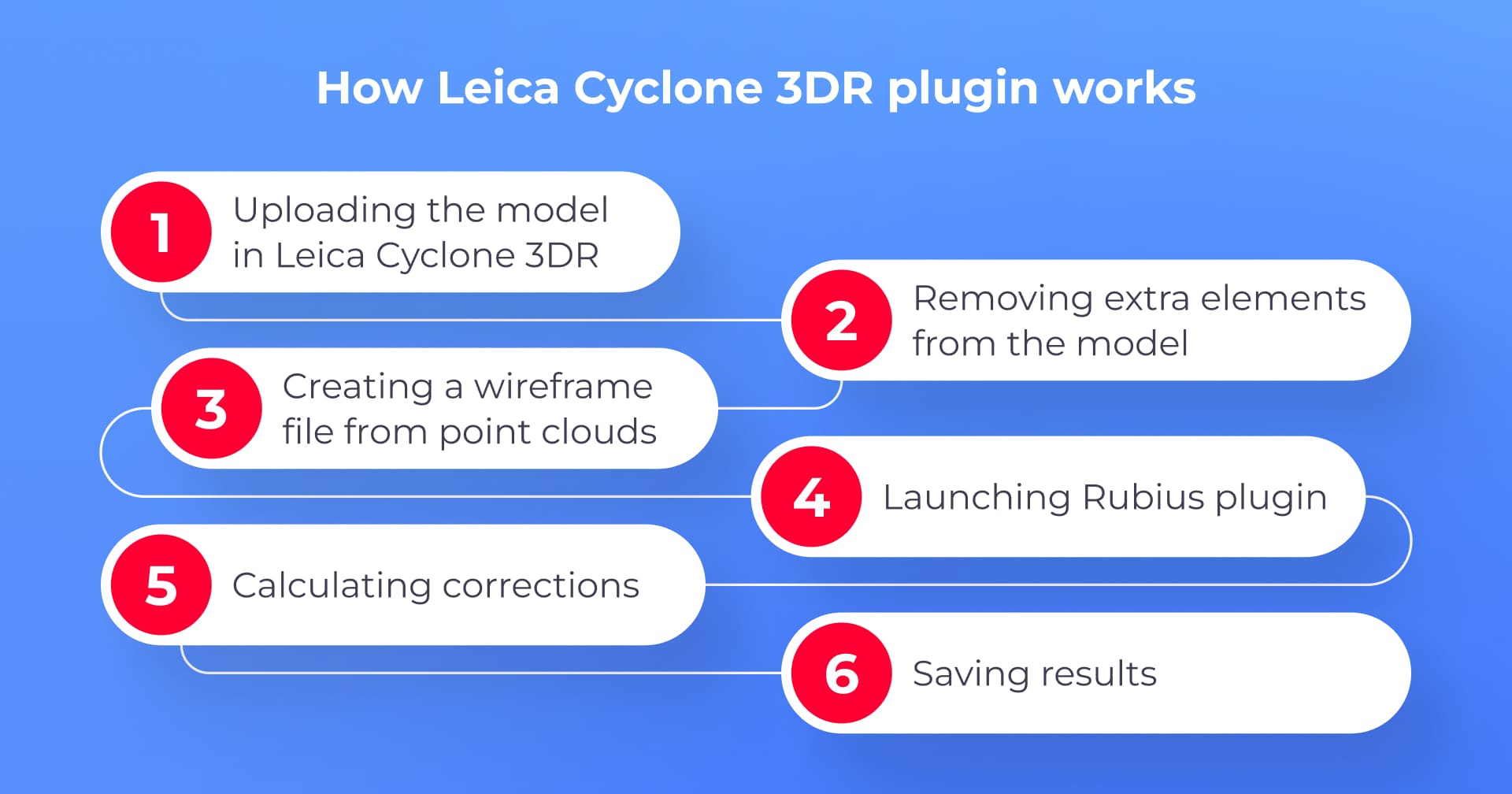Calculating the capacity of oil tankers
Rubius developed a Leica Cyclone 3DR plugin for point cloud calculations of oil tanker capacity applying temperature and list corrections
Industry
Expertise
Technologies
- Java Script
- Point Cloud Library
- Cyclone 3DR
The global leader in digital reality solutions, combining sensor, software and autonomous technologies. Hexagon has approximately 24,000 employees in 50 countries and net sales more over 5.2 billion euros.
Problem
The storage and transportation of petroleum products in tanks have their own specific features and risks. Temperature fluctuations and liquid pressure can change the shape of the container and impact the volume of petroleum products that it can hold. It is essential to consider tank location relative to the ship (trim correction) and angle of list to prevent spills of petroleum products.
The built-in systems for measuring the level of filling don’t take these factors into account. Overfilling the tanks beyond accepted norms can result in significant financial losses and bring environmental disaster.
Solution
Rubius developed a plugin for Leica Cyclone 3DR. It automatically calculates corrections taking into account pressure, temperature and other parameters for both vertical and horizontal reservoir, as well as for oil tankers. The system collects the results in a table and further uses them to determine the actual tank capacity.
Rubius specialists used the API Cyclone 3DR to calculate the geometry and assess potential distortions in the reservoirs. API allows editing formulas inside the Leica program without the need to rewrite the initial code. We cooperated with the Flow Measurement Research Institute to select the optimal system of equations to calculate list, trim, pressure, and temperature corrections.

Results
The introduction of the Rubius plugin into Cyclone 3DR allows users from over 50 countries worldwide to calculate temperature, pressure, list and trim corrections in a few seconds. This approach simplifies the calculation of the tank volume for storing and transporting petroleum products. As a result, it ensures that the optimal volume of petroleum products is loaded into containers, minimizing the risk of spills.
Let’s discuss your project
Tell us about your requirements and we’ll get back with a possible technical solution